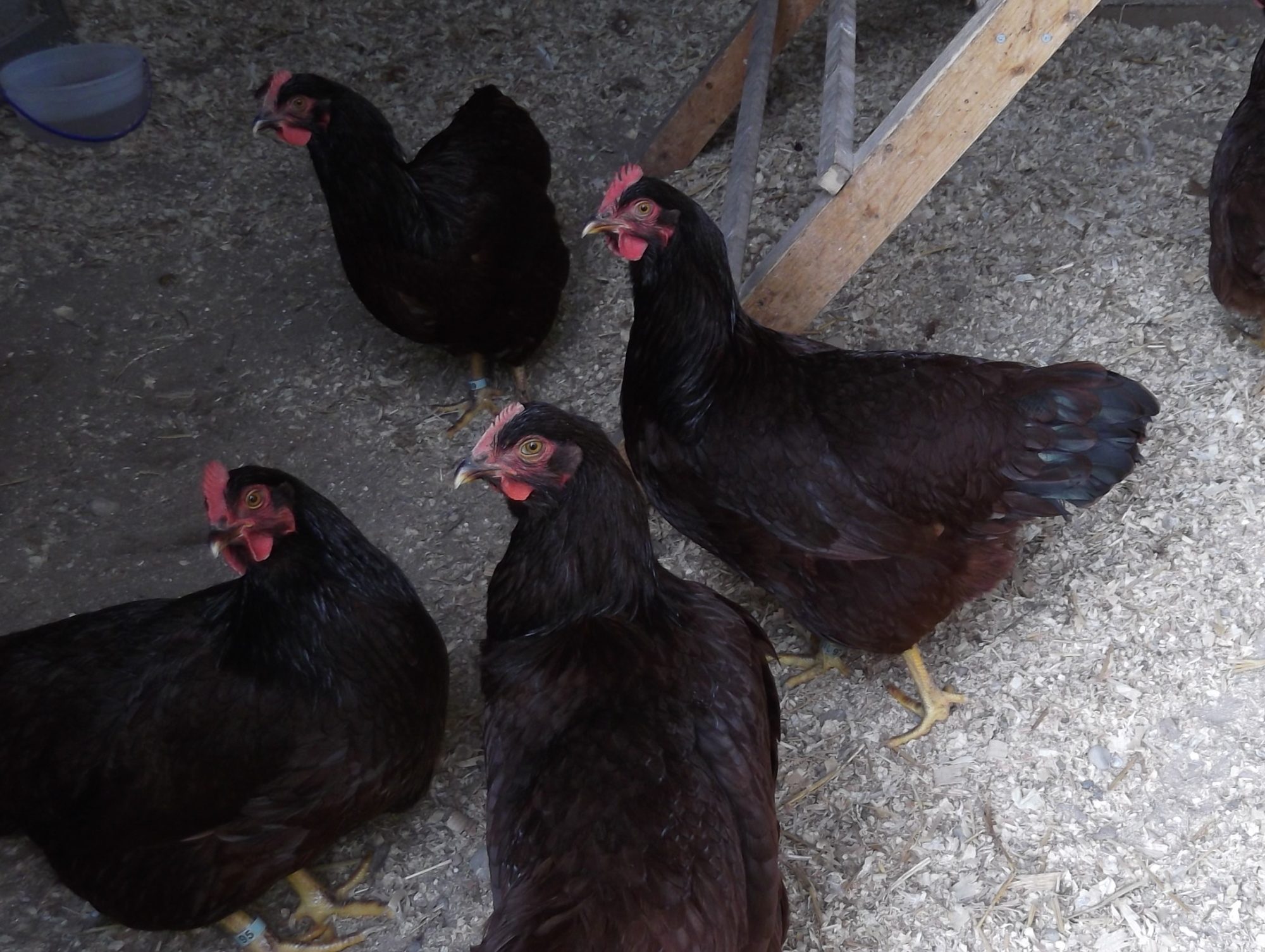Now, at point of lay, I've handled all of this year's pullets a couple of times. I've chosen my best two pullets of 2015. They are far from perfect. They need better tails, especially need to eliminate the red in those tail feathers. It's an uphill climb and very rarely do you see a female without at least some misplaced red in the tail.
On the males, the issue that remains a struggle is eliminating the misplaced black in the hackles. Have sorted through the K's now that they have finished putting in the adult feathers. Found two males with almost no misplaced black in the hackles.
Interesting to me is the fact that in both cases, the birds, male and female, chosen for having the most improvement in terms of not having misplaced color were also the birds with the best overall type as well.
So that's it. These 2 pullets and the two cockerels. The rest are fine birds, but I just wish to work with very small numbers of candidates and push hard on some these common faults. Not going to breed any female with excessive red in the tail and am keeping no males with excessive black in the hackles.


On the males, the issue that remains a struggle is eliminating the misplaced black in the hackles. Have sorted through the K's now that they have finished putting in the adult feathers. Found two males with almost no misplaced black in the hackles.
Interesting to me is the fact that in both cases, the birds, male and female, chosen for having the most improvement in terms of not having misplaced color were also the birds with the best overall type as well.
So that's it. These 2 pullets and the two cockerels. The rest are fine birds, but I just wish to work with very small numbers of candidates and push hard on some these common faults. Not going to breed any female with excessive red in the tail and am keeping no males with excessive black in the hackles.






